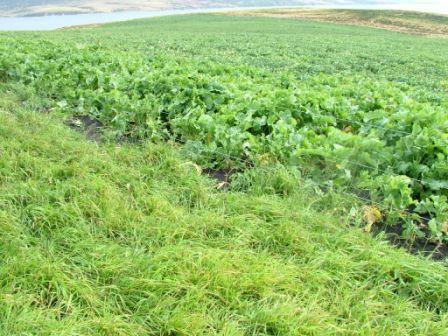
Farm Improvement Programme
The Farm Improvement Programme (FIP) scheme (previously known as the Pasture Improvement Programme) commenced in 1998/99, as a Falkland Islands Government grant for fertiliser (calcified seaweed and rock phosphate), seed, machinery use, fuel and fencing, with the aim of improving pastures on farm across the Islands.
Today the Farm Improvement Programme (FIP) exists to support the sustainable development and resilience of farming in the Falkland Islands. The core goals of FIP are aligned to those of the Department of Agriculture’s forthcoming Strategic Plan and the Islands Plan 2022-2026:
- Enhancing the Agricultural Economy
- Resilient Land and Grazing Systems
- Food Security
- Cross-cutting applications
-
- Monitoring, Adaptation and Innovation
- Capital and Infrastructure Improvement
- New Farm Business Support
CALL FOR APPLICATIONS FOR FY 2025-2026
Application Deadline for FY 25/26: close of business Monday 23rd June 2025
FIP is open for applications and full details, including eligibility and application requirements, can be found in the programme handbook. Please consult the handbook, and the additional forms and resources below, carefully when preparing your application. The DoA Advising team are happy to assist potential applicants in preparing their submission
 Farm Improvement Programme Handbook 2025-2026 Created: Wednesday, 21 May 2025 15:47 | Size: 422.17 KB
Farm Improvement Programme Handbook 2025-2026 Created: Wednesday, 21 May 2025 15:47 | Size: 422.17 KB Farm Improvement Programme: Application Form 2025-2026 Created: Wednesday, 21 May 2025 16:27 | Size: 93.03 KB
Farm Improvement Programme: Application Form 2025-2026 Created: Wednesday, 21 May 2025 16:27 | Size: 93.03 KB Farm Improvement Programme: Budget Spreadsheet 2025-2026 Created: Wednesday, 21 May 2025 16:32 | Size: 62 KB
Farm Improvement Programme: Budget Spreadsheet 2025-2026 Created: Wednesday, 21 May 2025 16:32 | Size: 62 KB Farm Improvement Programme: Budget Form (Printable) 2025-2026 Created: Wednesday, 21 May 2025 16:50 | Size: 101.74 KB
Farm Improvement Programme: Budget Form (Printable) 2025-2026 Created: Wednesday, 21 May 2025 16:50 | Size: 101.74 KB Farm Improvement Programme: Example - Application Form Created: Wednesday, 21 May 2025 16:45 | Size: 139.39 KB
Farm Improvement Programme: Example - Application Form Created: Wednesday, 21 May 2025 16:45 | Size: 139.39 KB Farm Improvement Programme: Example - Budget Form Created: Wednesday, 21 May 2025 16:40 | Size: 198.72 KB
Farm Improvement Programme: Example - Budget Form Created: Wednesday, 21 May 2025 16:40 | Size: 198.72 KB

